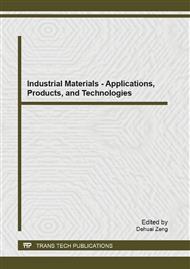p.442
p.446
p.450
p.454
p.458
p.462
p.466
p.470
p.476
An Experimental Investigation on Wear of Rail in Different Curve Radius
Abstract:
Among the rail defects, the transverse fatigue crack, which has been the most dangerous damage, is developed near the rail running face and grows perpendicular to the rail surface. Finally, the transverse fatigue crack would result in the failure of railway rail. In this paper, the rolling tests were performed using a JD-1 wheel/rail simulation facility without any lubricant. The tester is composed of a small wheel served as rail and a larger wheel served as wheel. The fatigue behavior of rail rollers with different materials and curve radius were investigated in detail by examining wear volume and wear scar using optical microscopy (OM) and scanning electronic microscopy (SEM). The results indicate that with curve radius decreasing, the wear volume of rail roller increases rapidly and the fatigue damage becomes severe. Furthermore, the cracking propagation angle increases obviously with curve radius decreasing and fatigue wear is dominating during the wear process. There appears distinct plastic deformation on the section of rail roller under small curve radius condition. For the same curve radius, the wear volume of PD3 rail is more than that of PG4 rail and the plastic deformation is more obvious. Moreover, the cracking propagation angle of PD3 rail material is smaller than that of PG4 rail. In conclusion, PG4 rail material is not suitable for the high-speed railway.
Info:
Periodical:
Pages:
458-461
Citation:
Online since:
August 2013
Keywords:
Price:
Сopyright:
© 2013 Trans Tech Publications Ltd. All Rights Reserved
Share:
Citation:


